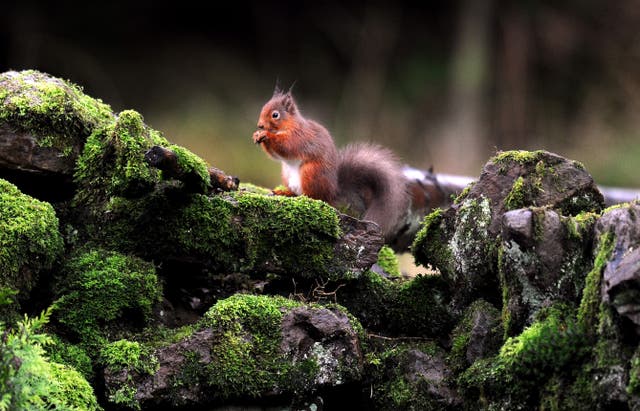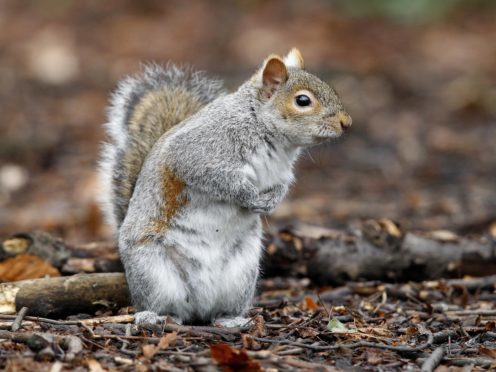Grey squirrels could have taken over from native red squirrels in the UK due to their problem-solving powers, researchers said.
A study tested wild squirrels with two tasks, one easy and one more difficult, to get hazelnuts.
Both species were equally successful at the easy task – opening a transparent lid – but more of the grey squirrels cracked the difficult one, a more complex task of pushing and pulling levers.
Researchers from the universities of Exeter and Edinburgh said this “superior behavioural flexibility may have facilitated their invasion success”.

Grey squirrels, which arrived from North America in the 19th century, now outnumber red squirrels by more than 15 to one.
Dr Pizza Ka Yee Chow, from the University of Exeter’s Centre for Research in Animal Behaviour, said: “Many factors have been considered to explain why grey squirrels are more successful when they move into areas where red squirrels live.
“These factors include disease resistance and the fact grey squirrels are bigger, but our research shows problem solving could be another key factor for the success of greys.
“This might be especially important for an invasive species like grey squirrels, as they have evolved elsewhere and have to adapt to their surroundings.”
During the study, researchers set up the tasks and observed squirrels.
The creatures can be identified by their unique body characteristics, including coat colour, tail shape, body size, ear shape and paw colour as well as markings on their face and body.
About 91% of grey squirrels eventually solved the difficult task, compared with 62% of red squirrels.
Researchers said “inefficient” foraging and food extraction was likely to mean poorer fitness among red squirrels, harming their chances of reproduction.
Reduced breeding is known to be a major factor in the decline of the species, they added.
“It is not yet clear whether grey squirrels are born better problem solvers, or whether they work harder because they’re an invasive species living outside their natural environment,” Dr Chow said.
“The current stage of our research is to look at this, and the results may give us more insight into the likely future of both species.”
One positive finding for the red squirrels was that, of those who solved the difficult task, some did so more quickly than greys in subsequent attempts.
The successful red squirrels were also quicker to change tactics after trying a method that did not work.
Professor Stephen Lea, also of Exeter’s Centre for Research in Animal Behaviour, said: “These results illustrate how investigating animals’ differing cognitive abilities can help us understand important issues in conservation.”
The researchers say they would have ideally studied wild squirrels living in the same area.
However, as red squirrel numbers usually decline rapidly when grey squirrels arrived , they chose similar but separate locations.
The grey squirrels studied were in woodland around the University of Exeter’s Streatham Campus, or on the campus itself, while the red squirrels were in woodland around Brodick Castle on the Isle of Arran, Scotland.
– A battle of wits? Problem-solving abilities in invasive Eastern grey squirrels and native Eurasian red squirrels, is published in the journal Animal Behaviour.
